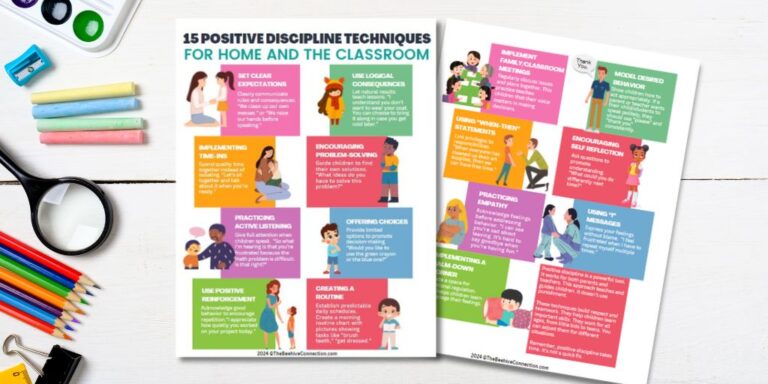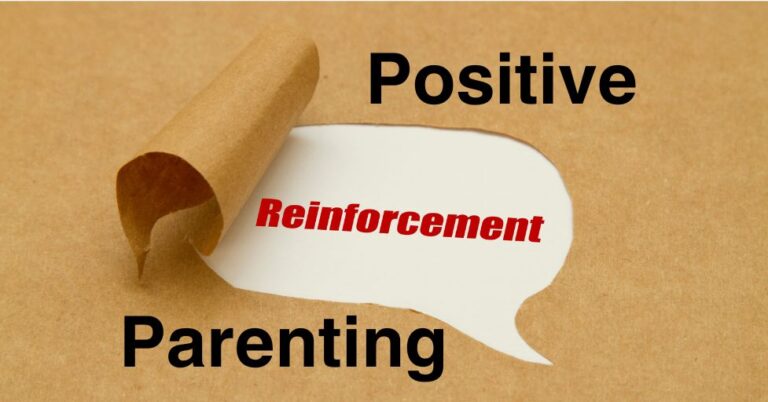Positive Discipline for Single Parents: A Guide to Effective Parenting
Disclosure: This post may contain affiliate links, meaning I may get a small commission if you decide to make a purchase through my links, at no cost to you.

Introduction – Positive Discipline for Single Parents: A Guide to Effective Parenting
Parenting is challenging, but single parenting takes it to a whole new level! Did you know that as of 2024, about 23% of children in the United States live with a single parent? If you’re one of these amazing solo warriors, you’re not alone.
Positive discipline can be your secret weapon in raising happy, well-adjusted kids. In this guide, we’ll explore how you can use positive discipline techniques to navigate the unique challenges of single parenting. Get ready to transform your parenting journey!
Understanding Positive Discipline for Single Parents
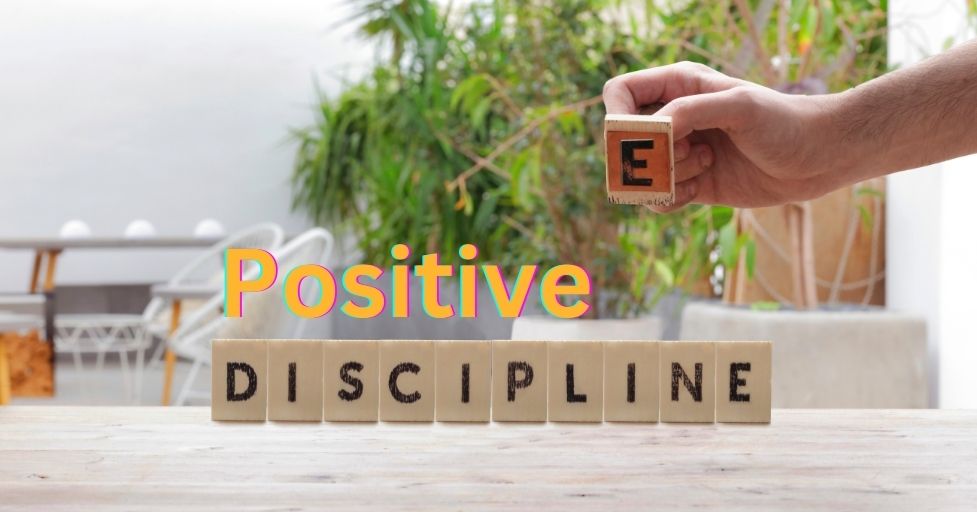
As a single parent, you’re the captain, first mate, and entire crew of your family ship! Navigating the choppy waters of parenting alone can be overwhelming, but positive discipline is like a compass that can guide you to calmer seas. Let’s dive into the world of positive discipline and discover how it can transform your parenting journey.
Did you know that children raised with positive discipline techniques are more likely to develop higher self-esteem and better problem-solving skills? As someone who’s worked as a preschool teacher and with young adults with special needs, I’ve seen how powerful these methods can be. So, let’s unpack this approach and see why it’s a game-changer for single parents like you!
What is positive discipline for single parents?
Positive discipline is like a breath of fresh air in the parenting world! It’s an approach that focuses on teaching and guiding children rather than punishing them. Imagine parenting as a dance – positive discipline helps you lead with grace, encouraging your child to follow your steps willingly instead of stepping on their toes!
At its core, positive discipline is about respect, understanding, and long-term solutions. It’s not about quick fixes or band-aid solutions. Instead, it’s about building a strong, loving relationship with your child while helping them develop crucial life skills. As a preschool teacher, I’ve seen how this approach can turn chaotic classrooms into collaborative learning spaces. The same magic can happen in your home!
Related:
What is Positive Discipline – Everyday Teaching
Why is it particularly beneficial for single parents?
Single parents, you’re the real-life superheroes of the parenting world! It’s particularly beneficial for you because it helps create a calm, cooperative home environment – something that’s crucial when you’re juggling all the responsibilities solo.
Here’s the kicker: positive discipline actually saves you time and energy in the long run. Instead of constantly putting out fires, you’re preventing them from starting in the first place.
It’s like teaching your child to fish instead of fishing for them – you’re empowering them to make good choices independently. This means less stress for you and more time for that much-needed self-care!
The core principles of positive discipline
Now, let’s break down the core principles of positive discipline. Think of these as the ingredients in your secret sauce of awesome parenting:
- Mutual respect: This is the foundation. You respect your child, and they learn to respect you and others.
- Understanding the child’s perspective: Put on your detective hat and try to figure out why your child is behaving a certain way.
- Effective communication: This is about really listening to your child and expressing yourself clearly.
- Teaching life skills: Every challenging moment is an opportunity to teach problem-solving, emotional regulation, and other crucial skills.
- Encouragement: Focus on your child’s efforts and improvements, not just results.
As someone who’s worked with young adults with special needs, I can tell you that these principles are universal. They work across ages and abilities, making them perfect for your parenting toolkit!
Related:
Positive Discipline Techniques PDF for Home and the Classroom
Positive Discipline in Everyday Teaching
Best Books on Positive Discipline
Common misconceptions about positive discipline for single parents
Let’s bust some myths! Some people think positive discipline is all sunshine and rainbows, with no boundaries. Wrong! It’s actually about setting clear, firm limits with kindness and respect. It’s not permissive parenting in disguise.
Another misconception is that positive discipline doesn’t work in “real-world” situations. As a preschool teacher, I can assure you it does! I’ve used these techniques to handle everything from playground disputes to full-blown tantrums. It’s not about having a perfect, obedient child – it’s about raising a thoughtful, responsible human being.
Lastly, some people think positive discipline is too time-consuming for busy single parents. While it does require some initial investment of time and energy, it pays off big time in the long run. You’re building a strong relationship and teaching skills that will serve your child (and you!) for a lifetime.
Remember, positive discipline isn’t about being a perfect parent – it’s about being a present, intentional one. You’ve got this, single parents! With these tools in your belt, you’re well on your way to raising happy, well-adjusted kids while maintaining your sanity. Now that’s what I call a win-win!
Building a Strong Foundation: Connection Before Correction

Let’s talk about building connections that are stronger than steel! As a single parent, you’re not just raising a child; you’re crafting a relationship that will last a lifetime.
The legendary psychologist Carl Rogers, author of On Becoming a Person said, “The curious paradox is that when I accept myself just as I am, then I can change.” The same goes for our kids – when we accept and connect with them, that’s when real growth happens.
In my years as a preschool teacher, I’ve seen how a strong emotional connection can turn even the most challenging behaviors around. It’s like magic! But here’s the thing – it’s not magic at all. It’s the power of connection, and you’ve got it right at your fingertips. So, let’s dive into how you can build that rock-solid foundation with your kiddos!
The importance of quality time in single-parent households
In the whirlwind of single parenthood, quality time can sometimes feel like a luxury. But here’s the kicker – it’s not a luxury, it’s a necessity! Studies show that children who spend quality time with their parents have higher self-esteem, better academic performance, and fewer behavioral problems.
But don’t panic if you can’t dedicate hours each day. It’s not about quantity; it’s about quality. Even 15 minutes of focused, device-free time can work wonders. As a preschool teacher, I’ve seen how a few minutes of one-on-one attention can completely turn a child’s day around. So, put down that phone (yes, I’m talking to you!), look your child in the eye, and watch the magic happen!
Techniques for fostering emotional connections with your children

Ready to supercharge your connection? Here are some techniques that’ll make your bond unbreakable:
- Active listening: Put on your detective hat and really tune in to what your child is saying. It’s not just about the words, but the feelings behind them.
- Emotion coaching: Help your child name and understand their feelings. It’s like giving them an emotional GPS!
- Physical affection: Hugs, high-fives, or a gentle pat on the back can speak volumes. Just remember to respect your child’s preferences.
- Shared activities: Find things you both enjoy. Whether it’s baking cookies or building LEGO castles, shared joy is double the fun!
- Validate their experiences: Even if you disagree, acknowledge their feelings. It’s not about being right; it’s about understanding.
Working with young adults with special needs taught me that these techniques work across all ages and abilities. They’re not just for little kids – they’re for all of us who need connection (and isn’t that everyone?).
How to balance work, personal time, and family bonding
Ah, the elusive work-life balance! As a single parent, you might feel like you’re constantly juggling flaming torches. But here’s a secret: perfect balance is a myth. It’s all about finding a rhythm that works for you and your family.
Try these strategies:
- Combine activities: Turn chore time into bonding time. Folding laundry? Make it a game!
- Schedule ‘sacred’ family time: Block out times in your calendar for family activities, just like you would for work meetings.
- Involve kids in your interests: Love yoga? Do it together! Passionate about cooking? Make them your sous chef!
- Use technology wisely: Can’t be there for bedtime? Try a video call for storytime.
Remember, it’s okay to prioritize your needs too. As they say on airplanes, “Put on your own oxygen mask first!” A happy, recharged parent is a better parent.
Creating rituals and routines that strengthen your relationship

Rituals and routines are the secret sauce of strong families. They provide a sense of security and belonging that kids crave. In my preschool classroom, our daily routines were like anchors in a sometimes chaotic sea.
Here are some ideas to try:
- Morning huddles: Start the day with a quick family check-in.
- Taco Tuesdays (or any themed dinner night): Make meal planning fun and predictable.
- Weekend adventures: Explore a new park or museum each week.
- Bedtime stories: Even older kids enjoy being read to (or reading to you!).
- Gratitude sharing: End each day by sharing something you’re thankful for.
The key is consistency. These don’t have to be elaborate affairs – simple is often better. And hey, if life throws you a curveball (as it often does), don’t sweat it. The most important ritual is showing up for each other, day after day.
Building a strong connection with your child isn’t always easy, especially when you’re flying solo. But trust me, it’s worth every ounce of effort. These connections are the threads that weave the tapestry of your family life. So go ahead, start strengthening those threads today.
Effective Communication: The Heart of Positive Discipline for Single Parents
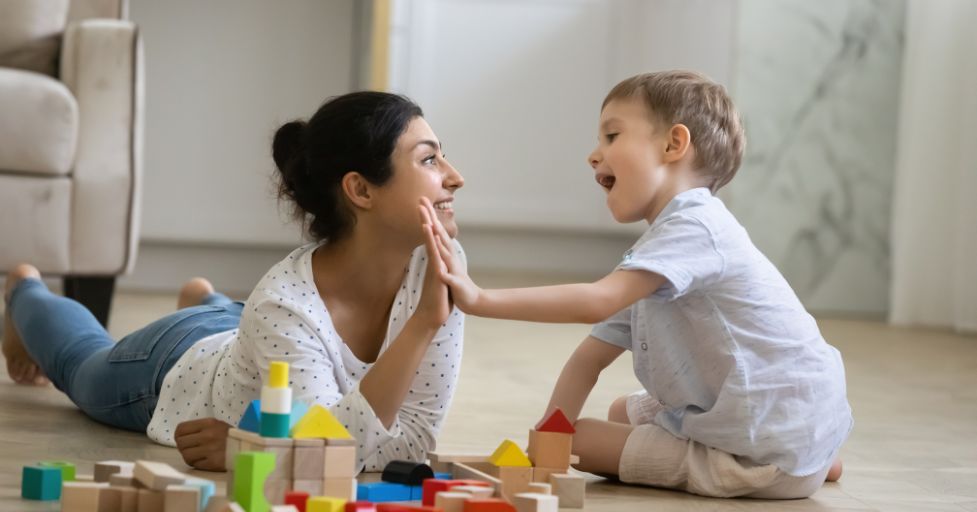
Alright, single parents, let’s talk about the concept that can transform your relationship with your kids – effective communication! You know that feeling when you’re speaking, but it seems like your words are bouncing off an invisible force field around your child?
Well, you’re not alone. In fact, a study by the University of Michigan found that parents and children have different perceptions of their conversations about 60% of the time. Yikes!
But don’t worry, I’ve got your back. As a preschool teacher and someone who’s worked with young adults with special needs, I’ve seen firsthand how the right communication techniques can break down barriers and build bridges. It’s like having a secret decoder ring for your child’s thoughts and feelings. So, let’s dive into the secrets of effective communication in positive discipline!
Active listening skills for single parents
Picture this: You’re juggling dinner prep, a work call, and your child is trying to tell you about their day. Sound familiar? Welcome to the multitasking Olympics of single parenthood! But here’s the thing – active listening is your gold medal event.
Active listening isn’t just about hearing words; it’s about tuning into the whole message. It’s like being a detective, piecing together clues from words, tone, and body language. Here are some tips to level up your active listening game:
- Stop and face your child: I know, I know, you’ve got a million things to do. But those few seconds of undivided attention can make all the difference.
- Use nonverbal cues: Nod, maintain eye contact, and use encouraging sounds like “mm-hmm” to show you’re engaged.
- Reflect and clarify: “So, what I’m hearing is…” This shows you’re really trying to understand.
- Avoid interrupting: It’s tempting to jump in with solutions, but sometimes kids just need to be heard.
Remember, active listening isn’t about agreeing with everything your child says. It’s about creating a safe space for them to express themselves. I’ve seen even the most withdrawn kids open up when they feel truly heard.
Using “I” statements to express feelings and needs

Okay, pop quiz! Which sounds better: “You never listen to me!” or “I feel frustrated when I’m not heard.” The second one, right? That’s the power of “I” statements!
“I” statements are important in the world of communication. They express your feelings without pointing fingers, reducing defensiveness and opening the door to real conversation. Here’s the basic formula:
“I feel [emotion] when [situation] because [reason]. I need [request].”
For example: “I feel overwhelmed when the house is messy because it’s hard for me to relax. I need help tidying up.”
Using “I” statements might feel awkward at first, but stick with it! In my years working with special needs young adults, I saw how this simple technique could defuse tense situations and foster understanding.
Teaching children to communicate their emotions effectively
Let’s face it, kids aren’t born knowing how to express their feelings. Heck, some adults still struggle with it! But teaching your children to communicate their emotions effectively is like giving them a superpower.
Start by building their emotional vocabulary. Instead of just “mad,” they might be frustrated, disappointed, or overwhelmed. The more words they have for their feelings, the better they can express them.
Try these fun activities:
- Emotion charades: Act out different feelings and guess what they are.
- Feeling thermometer: Draw a thermometer and use it to gauge intensity of emotions.
- Emotion journaling: For older kids, encourage them to write about their feelings.
Remember, it’s not about suppressing “negative” emotions. It’s about acknowledging all feelings and finding healthy ways to express them. As a preschool teacher, I saw how even the youngest children could learn to say, “I’m angry because…” instead of lashing out physically.
Navigating difficult conversations with empathy and understanding

Ah, difficult conversations. They’re about as fun as a root canal, right? But they’re also opportunities for growth and deeper connection. The key? Empathy and understanding.
First, check your own emotions. Are you coming from a place of anger or frustration? Take a breath, count to ten, do whatever you need to center yourself.
Next, put on your empathy goggles. Try to see the situation from your child’s perspective. What might they be feeling? What needs are they trying to meet?
Use open-ended questions to encourage dialogue: “Can you tell me more about that?” or “How did that make you feel?”
It’s OK to Take a Break
And remember, it’s okay to take a break if things get heated. Say something like, “This is important, and I want to give it my full attention. Let’s take a few minutes to calm down and come back to it.”
In my work with special needs young adults, I learned that sometimes the most powerful thing you can say is, “I may not understand exactly how you feel, but I’m here to listen and support you.”
Effective communication is like a muscle – the more you use it, the stronger it gets. So don’t get discouraged if it feels challenging at first.
Keep practicing, keep listening, and keep expressing yourself clearly and compassionately. Before you know it, you and your child will be communication ninjas, tackling even the toughest conversations with grace and understanding.
Setting Clear Boundaries and Expectations

Alright, let’s talk about an important ingredient to a harmonious household – boundaries! Did you know that children who grow up with clear, consistent boundaries are more likely to develop self-discipline and emotional regulation skills?
It’s true! As the famous child psychologist Dr. Haim Ginott once said, “Children are like wet cement. Whatever falls on them makes an impression.” So, let’s make sure we’re making the right kind of impression!
Now, I know what you’re thinking. “Setting boundaries? Easier said than done!” I get it. As a parent and teacher, I’ve seen my fair share of boundary-pushing behavior. But I’ve also seen the incredible transformation that can happen when boundaries are set with love and consistency.
The importance of consistency in single-parent homes
Picture this: You’re trying to steer a boat, but the wind keeps changing direction. Frustrating, right? That’s what life can feel like for kids without consistent boundaries. In single-parent homes, consistency is your anchor in the storm.
Consistency doesn’t mean being rigid or inflexible. It means providing a predictable environment where your kids know what to expect. It’s like creating a roadmap for your family – everyone knows where they’re going and how to get there.
Here are some tips to boost consistency:
- Create a family schedule and stick to it as much as possible
- Follow through on consequences (and rewards!) every time
- Align your words and actions – kids notice when we say one thing and do another
Remember, consistency takes practice. Don’t beat yourself up if you slip up occasionally. The goal is progress, not perfection!
How to involve children in setting family rules and consequences

Now, here’s a revolutionary idea – what if we involved our kids in setting the rules? I know, it sounds crazy, but hear me out. When children are part of the rule-making process, they’re more likely to buy into those rules and follow them.
In my preschool classroom, we always started the year by creating our “classroom constitution” together. The kids came up with some of the best rules! And you know what? They were super keen on enforcing them too.
Try these steps to set up rules in the home:
- Hold a family meeting to discuss rules and expectations
- Ask your kids what rules they think are important and why
- Work together to decide on fair consequences for breaking rules
- Write down the agreed-upon rules and consequences, and display them prominently
Remember, this is a collaborative process. You still have the final say, but involving your kids helps them feel heard and respected.
Related:
The Importance of Family Meetings -FREE Printables
Implementing age-appropriate boundaries
Here’s the thing about boundaries – they need to grow with your child. What works for your toddler won’t cut it for your teenager. It’s like buying shoes – you need to keep updating as they grow!
For younger kids, boundaries might focus on physical safety and basic behavior. As they get older, boundaries shift to include things like screen time, social media use, and personal responsibility.
Here’s a quick age guide for age-appropriate boundaries:
- Toddlers (2-3): Simple rules about safety and basic behavior
- Preschoolers (3-5): Introduce concepts of sharing and taking turns
- School-age (6-12): Expand to include homework responsibilities and increased independence
- Teens (13+): Focus on decision-making skills and preparing for adulthood
Remember, every child is unique. What works for one might not work for another. Trust your instincts and adjust as needed.
Related:
Age Appropriate Discipline Chart PDF
Dealing with pushback and resistance from children

If your kids are pushing back against boundaries, congratulations – you’re raising a normal, healthy child! Resistance is actually a sign that your child is developing independence and critical thinking skills.
But that doesn’t make it any less frustrating, right? Here’s how to handle it:
- Stay calm: Easier said than done, I know! But responding with anger only escalates the situation.
- Validate their feelings: “I understand you’re frustrated. It’s okay to feel that way.”
- Restate the boundary: “I hear you, but the rule still stands.”
- Offer choices within the boundary: This gives them a sense of control.
- Use natural consequences: If they refuse to wear a coat, let them feel cold (within reason, of course).
In my work with special needs young adults, I found that often, pushback was a form of communication. Sometimes, they were really saying, “I’m overwhelmed” or “I need more independence.” So put on your detective hat and try to understand what’s behind the resistance.
Setting and maintaining boundaries isn’t always easy, especially when you’re parenting solo. But remember, you’re not just keeping order – you’re teaching your kids valuable life skills.
Clear boundaries and expectations are like guardrails on the highway of life, keeping your kids safe while they learn to navigate their world. So stand firm, stay consistent, and keep communicating. You’re doing great, super parent!
Problem-Solving Together: Empowering Your Children

Ready to unlock your child’s inner problem-solving superhero? Did you know that children who are taught problem-solving skills early on are 30% more likely to handle stress effectively as adults? Now that’s a superpower worth developing!
As a mom of four awesome young adults, I’ve seen firsthand the amazing transformation that happens when we stop solving problems for kids and start solving them with them. It’s like watching a flower bloom – slow at first, then suddenly, BAM!
They’re tackling challenges left and right. So, let’s dive into the world of collaborative problem-solving and watch your little ones soar!
Teaching kids to find solutions to their own problems
Picture this: Your child comes to you with a problem, and instead of jumping in with a solution, you say, “Hmm, that’s tricky. What do you think we could do about it?” Cue the confused look, right? But this is where the magic happens!
Teaching kids to problem-solve is like giving them a Swiss Army knife for life. Here’s how to get started with problem solving:
- Encourage brainstorming: No idea is too silly! The crazier, the better.
- Use the “What if” game: “What if we tried this? What might happen?”
- Break big problems into smaller steps: It’s less overwhelming that way.
- Celebrate the process, not just the outcome: A failed solution is still a learning opportunity!
In our home, we had a set of stairs, and the kids sat on the bottom step to work through issues. It was amazing to see even the youngest children start to approach problems with confidence and creativity. You can create a similar space at home – maybe a cozy corner with some paper and crayons for brainstorming.
Remember, the goal isn’t to make all their problems disappear. It’s to equip them with the tools to handle whatever life throws their way. You’re not just solving today’s problem; you’re preparing them for tomorrow’s challenges!
Using family meetings to address issues collaboratively
Family meetings might sound formal, but they’re actually a fantastic way to bring some democracy into your home! Think of it as your family’s own little town hall – a place where everyone’s voice matters.
Here’s how to make family meetings work for you:
- Schedule regular meetings: Weekly or bi-weekly works well.
- Create an agenda: Let everyone contribute items they want to discuss.
- Use a talking stick: Only the person holding it can speak. It’s a great way to ensure everyone gets heard.
- Focus on solutions, not blame: “How can we fix this?” instead of “Who did this?”
- End on a positive note: Maybe with a fun family activity or treat.
In our home, sometimes these meetings were so casual that the kids didn’t even know we were having them. It was incredible to see how even those who struggled with communication found ways to contribute and feel heard.
Remember, these meetings aren’t just for problem-solving. They’re also great for planning fun activities, sharing good news, and building family bonds. It’s like team-building, but way more fun!
Related:
Family Meeting Bundle FREE Printables
Encouraging independence and responsibility
Alright, it’s time to talk about the “I” word – Independence! I know, I know, it can be scary to let go. But remember, your ultimate goal is to raise a capable, confident adult. And that journey starts now!
Here are some ways to foster independence:
- Give age-appropriate chores: Even toddlers can help sort laundry or set the table.
- Let them make choices: Start small, like choosing between two outfit options.
- Teach life skills: Cooking, laundry, budgeting – these are gifts that keep on giving.
- Encourage problem-solving: Before jumping in with a solution, ask, “What do you think you could do?”
In my preschool class, we had a different “Special Helper” every day. Kids loved the responsibility, and it was amazing to see how capable they were when given the chance.
Remember, fostering independence doesn’t mean you’re not there for them. It means you’re their safety net, not their parachute. You’re saying, “I believe in you, and I’ve got your back.”
How to step back and let children learn from natural consequences

Okay, this might be the toughest part of all – stepping back and watching your child make mistakes. But here’s the thing: those mistakes? They’re golden opportunities for learning!
Natural consequences are like life’s built-in teaching moments. They’re often more effective than any punishment we could devise. Here’s how to use them natural consequences:
- Identify safe opportunities: Let them forget their lunch once (but maybe pack a backup, just in case).
- Resist the urge to rescue: It’s hard, but necessary for their growth.
- Reflect together afterwards: “What happened? What could you do differently next time?”
- Offer support, not solutions: “That sounds tough. How can I help you figure this out?”
Working with young adults with special needs taught me the power of natural consequences. Even for those with significant challenges, experiencing the results of their actions was a powerful teacher.
Remember, your job isn’t to make their life perfect. It’s to prepare them for a life that won’t be. By letting them experience natural consequences in a safe, supportive environment, you’re equipping them with real-world problem-solving skills.
Empowering your children to solve problems isn’t just about making your life easier (though that’s a nice bonus!). It’s about raising resilient, confident individuals who can tackle whatever challenges come their way.
So take a deep breath, step back, and watch your little problem-solvers bloom. You’ve got this, and more importantly, they’ve got this!
Related:
What are Natural Consequences vs Logical Consequences
Self-Care for Single Parents: Fueling Your Positive Discipline Journey
Alright, it’s time to talk about YOU! Yes, you heard that right. We’re putting the spotlight on the unsung hero of this parenting journey – you! Did you know that according to a study by the American Psychological Association, parents who practice regular self-care report lower stress levels and higher life satisfaction?
It’s true! As the old saying goes, “You can’t pour from an empty cup.” So, let’s fill up that cup of yours and get you ready to rock this positive discipline journey!
Now, I know what you’re thinking. “Self-care? I barely have time to brush my teeth!” I get it. As a preschool teacher juggling the needs of 20+ little ones, I often felt the same way. But here’s the thing – self-care isn’t a luxury, it’s a necessity.
It’s the fuel that keeps your parenting engine running smoothly. So, let’s dive in and discover how you can make self-care a reality in your busy single-parent life!
Why self-care is crucial for effective parenting

Picture this: You’re on an airplane, and the flight attendant is giving the safety instructions. What do they always say? “In case of an emergency, put on your own oxygen mask before assisting others.” Well, parenting is like one long flight (sometimes turbulent!), and self-care is your oxygen mask.
Self-care isn’t selfish – it’s essential. Here’s why:
- It reduces stress: When you’re stressed, it’s harder to stay patient and consistent.
- It improves mood: Happy parent, happy child!
- It boosts energy: Parenting is a marathon, not a sprint. You need stamina!
- It enhances decision-making: A well-rested mind makes better choices.
In my work with young adults with special needs, I saw how crucial self-care was for their caregivers. Those who prioritized their own well-being were better equipped to handle challenges and provide consistent, positive support.
Remember, taking care of yourself isn’t taking away from your child – it’s giving them the best version of you. And isn’t that what they deserve?
Practical self-care strategies for busy single parents
Okay, I can hear you saying, “That’s great, but when am I supposed to find time for self-care?” I hear you! The key is to start small and be creative. Here are some practical strategies that even the busiest single parent can squeeze in:
- Micro-breaks: Take 5 deep breaths, stretch for 2 minutes, or enjoy a cup of tea mindfully.
- Multitask with self-care: Listen to a podcast or audiobook while doing chores.
- Early bird special: Wake up 15 minutes before your kids for some quiet time.
- Involve the kids: Do a family yoga session or dance party.
- Prioritize sleep: It’s tempting to use kid-free time to catch up on chores, but sleep is crucial!
Remember, self-care doesn’t have to be time-consuming or expensive. It’s about finding moments in your day to recharge and reconnect with yourself.
Building a support network and asking for help
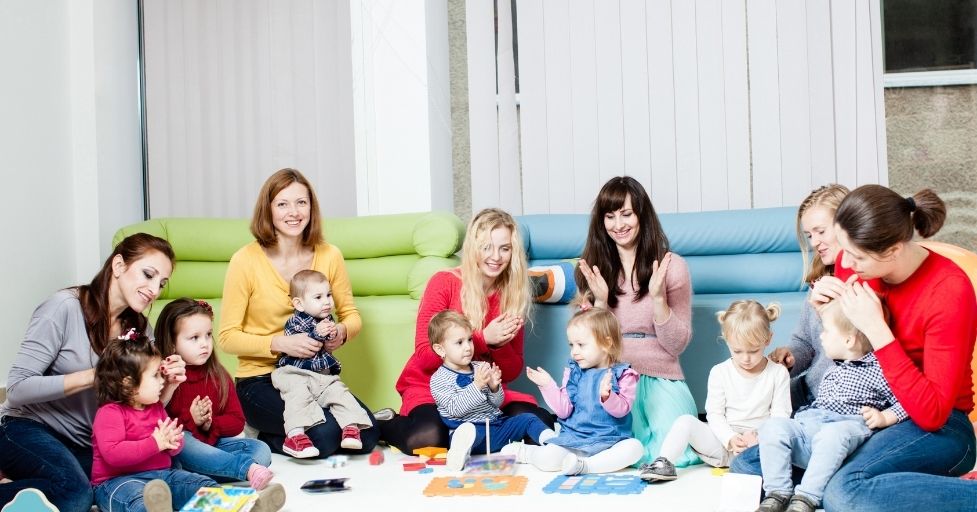
Let’s bust a myth right now: Supermom and Superdad don’t exist! And even if they did, they’d definitely have a support team. Building a support network isn’t admitting defeat – it’s smart parenting.
Here’s how to build and utilize your support network:
- Identify potential helpers: Family, friends, neighbors, other parents at school.
- Be specific about what you need: “Could you pick up the kids on Tuesday?” is better than “I need help sometimes.”
- Join single parent support groups: Online or in-person, these can be a goldmine of support and resources.
- Arrange childcare swaps with other parents: You watch their kids one weekend, they watch yours the next.
- Don’t be afraid to ask for professional help: Therapists, counselors, and parenting coaches can be invaluable.
In my work with special needs young adults, I saw how crucial a strong support network was for their families. It truly does take a village, and there’s no shame in embracing that.
Remember, asking for help isn’t a sign of weakness – it’s a sign of strength and wisdom. You’re modeling problem-solving and community-building for your kids!
Modeling self-care for your children
Here’s a mind-blowing thought: By taking care of yourself, you’re teaching your kids a valuable life skill! Children learn by watching us, so when you prioritize self-care, you’re showing them how to do the same.
Try these ideas for helping kids see self-care as important:
- Verbalize your self-care: “Mommy’s going to take a quick break to recharge her batteries.”
- Involve them in your self-care routines: Do a family meditation or have a spa night together.
- Encourage them to practice self-care: Help them identify activities that help them feel calm and refreshed.
- Celebrate self-care wins: “I’m proud of myself for taking that walk today. I feel so much better!”
Remember, when you model self-care, you’re not just helping yourself – you’re setting your kids up for a lifetime of emotional well-being.
Self-care isn’t selfish, it’s essential. It’s the foundation that makes positive discipline possible. So, dear single parents, it’s time to put yourself on the priority list. Your kids don’t need a perfect parent – they need a happy, healthy one.
By taking care of yourself, you’re giving them exactly that. So go ahead, take that bubble bath, read that book, or simply sit in silence for five minutes. You’ve earned it, and your positive discipline journey will be all the better for it!
Handling Challenging Behaviors with Positive Discipline

Alright, let’s tackle the elephant in the room – those moments when your little angel suddenly sprouts horns! We’ve all been there, and let me tell you, it’s not just you.
Did you know that according to a study by the American Academy of Pediatrics, challenging behaviors are a normal part of child development, with up to 83% of preschoolers exhibiting some form of challenging behavior? So breathe easy – you’re in good company!
Now, I know what you’re thinking. “Normal or not, how do I handle these behaviors without losing my cool?” As a mom of four kids and the 3rd of eleven children, I have seen and weathered many a tantrum storm, I can tell you that positive discipline is your secret weapon.
It’s like having a Swiss Army knife for behavior management – versatile, effective, and always there when you need it. So let’s dive in and turn those challenging moments into opportunities for growth and connection!
Dealing with tantrums, defiance, and sibling rivalry
Ah, the holy trinity of challenging behaviors! Tantrums, defiance, and sibling rivalry can make even the calmest parent want to pull their hair out. But here’s the thing – these behaviors are often your child’s way of communicating needs they can’t express otherwise. It’s like they’re speaking a foreign language, and our job is to become fluent!
Here are some positive discipline strategies to try for taming outbursts:
- For tantrums: Stay calm (easier said than done, I know!), acknowledge feelings, and offer comfort. “I see you’re really upset. Can I give you a hug?”
- For defiance: Offer choices within limits. “Would you like to put on your shoes now or after you finish your snack?”
- For sibling rivalry: Avoid comparing siblings, encourage cooperation over competition, and give each child one-on-one time.
Remember, the goal isn’t to eliminate these behaviors (that’s not realistic!), but to teach your child how to handle them constructively.
Related:
Taming Tantrums from Toddlers to Teens
Using time-ins instead of time-outs

Time for a paradigm shift! Instead of sending your child away when they’re struggling, bring them closer. That’s the essence of a time-in. It’s like turning a penalty box into a coaching corner!
Here’s how to do a time-in:
- Find a quiet, comfortable space.
- Sit with your child and offer comfort.
- Once they’re calm, discuss what happened and brainstorm better choices for next time.
- End with a positive connection – maybe a hug or a high-five.
In my work with young adults with special needs, we used a similar approach we called “connection before correction.” It was amazing to see how a moment of empathy could diffuse even the most intense situations.
Remember, time-ins aren’t about letting your child off the hook. They’re about teaching emotional regulation and problem-solving in a supportive environment.
Related:
The Ultimate Guide to Time-Ins
Redirecting negative behaviors positively
Imagine you’re driving and suddenly hit a roadblock. You don’t just sit there, right? You find another route. That’s what redirection is all about – helping your child find a better path.
Here are some redirection techniques:
- Offer an alternative: “Instead of hitting, let’s squeeze this stress ball.”
- Use humor: A silly voice or funny face can instantly change the mood.
- Change the environment: Sometimes a change of scenery is all that’s needed.
- Give a job: “Can you help me sort these socks?” Responsibility can be a great distraction.
In my preschool classroom, we had a “solution toolkit” – a box filled with items that could help redirect behavior, like bubbles for deep breathing or playdough for sensory input. You could create something similar at home!
Remember, redirection isn’t about ignoring the behavior. It’s about acknowledging the need behind it and finding a more positive way to meet that need.
When and how to seek professional help
Let’s be real – sometimes we all need a little extra help, and that’s okay! Seeking professional help isn’t a sign of failure; it’s a sign of strength and commitment to your child’s well-being.
Consider professional help if:
- Behaviors are severe, persistent, or beyond age-appropriate norms.
- Your child’s behavior is impacting their ability to function at home or school.
- You’re feeling overwhelmed or your relationship with your child is suffering.
- Your child has experienced trauma or significant life changes.
How to seek help:
- Start with your pediatrician – they can rule out any underlying health issues and provide referrals.
- Look into family therapists or child psychologists specializing in behavioral issues.
- Consider parent coaching or support groups for additional strategies and support.
In my experience working with special needs young adults, I saw how early intervention could make a world of difference. Don’t hesitate to reach out if you’re concerned.
Remember, seeking help doesn’t mean you’re not a good parent. It means you’re a great parent who’s willing to do whatever it takes to support your child!
Handling challenging behaviors with positive discipline isn’t always easy, but it’s incredibly rewarding. You’re not just managing behavior; you’re teaching life skills, building emotional intelligence, and strengthening your relationship with your child.
So the next time your little one throws a curveball your way, take a deep breath, put on your positive discipline hat, and remember – you’ve got this! Every challenging moment is an opportunity for growth, for both you and your child.
Conclusion for Positive Discipline for Single Parents

Embarking on the positive discipline journey as a single parent might seem daunting. By focusing on connection, communication, and collaboration with your children, you’re laying the foundation for a harmonious household and raising responsible, empathetic individuals.
Embrace the challenges, celebrate the victories (no matter how small!), and don’t forget to give yourself a pat on the back. You’re doing an incredible job! Ready to transform your parenting approach?
Start implementing these positive discipline techniques today, and watch your relationship with your children flourish. You’re not just parenting; you’re shaping the future – one positive interaction at a time!
FAQ for Positive Discipline for Single Parents
- Q: How can I stay calm when my child misbehaves? (Keywords: managing parental anger, stay calm parenting)
A: Take deep breaths, count to ten, or step away for a moment if needed. Remember, your child is learning and growing. Focus on understanding their feelings and needs. It’s okay to take a break and return to the situation when you’re calmer.
- Q: What’s the best way to handle tantrums as a single parent? (Keywords: tantrum management, single parent strategies)
A: Stay calm and acknowledge your child’s feelings. Offer comfort and a safe space to express emotions. Once they’re calm, talk about what happened and brainstorm better ways to handle big feelings next time. Consistency is key!
- Q: How do I set boundaries without being too harsh? (Keywords: positive parenting boundaries, gentle discipline techniques)
A: Explain rules clearly and kindly. Use natural consequences instead of punishment. Involve kids in setting family rules. Be consistent and follow through. Remember, boundaries show love and help kids feel secure.
- Q: Can positive discipline work for teenagers too? (Keywords: positive discipline teens, parenting adolescents)
A: Absolutely! With teens, focus on mutual respect and problem-solving together. Give them more independence while maintaining clear expectations. Listen to their perspective and involve them in family decisions. Positive discipline helps build trust and communication.
- Q: How do I find time for self-care as a single parent? (Keywords: single parent self-care, work-life balance parenting)
A: Start small – even 5-minute breaks count! Wake up a bit earlier for quiet time, or use naptime for yourself. Involve kids in your self-care routines. Build a support network and don’t be afraid to ask for help. Remember, taking care of yourself makes you a better parent!
GET FREE ACCESS TO OUR LIBRARY OF FREE PRINTABLES AND RESOURCES!
Enter Your Name and Email for FREE Access to our Library of FREE Home and Family Printables Series!


